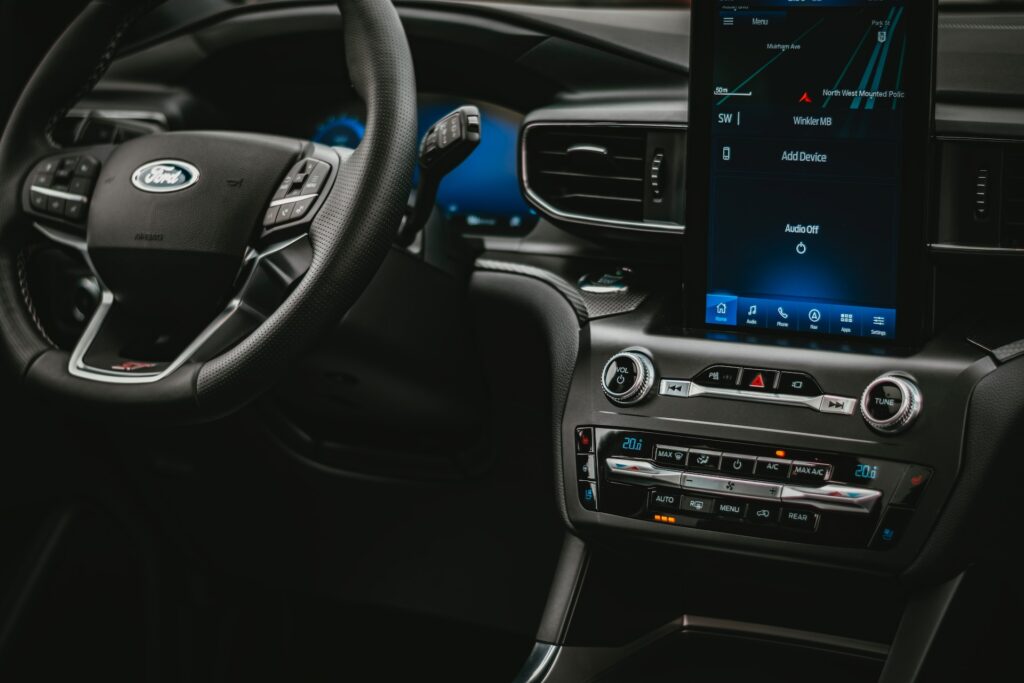We live in a constantly changing world due to new technologies and innovations. One of the areas constantly on the move is car audio. Modern vehicles now benefit from being more connected and “smart,” with automotive audio systems being part of these advancements.
But what do all these changes hold in store for the future of car audio? Let’s look at what the next generation of stereos will bring to vehicle interiors. Of course, we’re talking about more than audio and sound reproduction. Our discussion will look at the entire world of auto infotainment.
Learning about these improvements can be helpful if you plan on making a future purchase, like at car auctions in Miami.
Voice Control Gets Smarter
Current voice assistants like Siri and Alexa have paved the way for more advanced voice recognition in cars. Future car stereos will have conversational voice control where you can change settings, queue up playlists, and more with natural speech. Much of this technology will be based on artificial intelligence (AI), which allows for more natural language processing.
You won’t make commands but will have conversations with the next generation of voice assistants. These systems will understand multiple phrasings of requests and handle contextual follow-up questions without repeating wake words. This makes controlling the stereo safer and less distracting while driving.
Total Connection with Your Digital Life
Future car systems will seamlessly integrate with smartphones and digital services. Missed a phone call while driving? Your car will quickly prompt you to return it through the stereo. Want to continue listening to that song from your phone? The stereo system will sync to things and pick up where the music left off. Streaming services like Spotify could essentially “hand-off” playback from your phone to your car.
Immersive Audio Experiences
Basic stereo sound will give way to surround sound and 3D audio reproduction in vehicles. We’re already seeing this today. Multiple speakers appropriately tuned for the car cabin environment can create an immersive sound so you feel like you’re at a concert hall or outdoor venue.
Expect more use of psychoacoustic processing to deliver a full, layered soundstage. Psychoacoustic processing is an elaborate term describing the technology that works with the human auditory system for peak listening. Active noise cancellation, another in-use technology, will also help remove unwanted road noise from the listening experience.
Video Goes Mobile
Video is already common in today’s cars, with rearview camera monitors and navigation being two examples. Tomorrow’s vehicles will expand on this with infotainment displays that showcase video playback from streaming services and other platforms.
Technology will prevent drivers from seeing these moving images while the car is in motion. However, passengers can watch movies and TV shows from displays located throughout the cabin.
Personalization and Customization
Your car stereo will adapt to personal preferences thanks to AI. The system will learn your favorite audio sources, playlists, and settings to cue them up automatically. Factors like time of day, day of the week, location, and weather may also come into play.
User profiles will let family members and friends customize the listening experience to their liking as well. Smartphone and smartwatch apps will help the car recognize who’s inside and program the audio and infotainment accordingly.
Enhanced Audio Controls
There’s still debate about whether knobs and buttons for the audio system will be fully replaced by touchscreen controls. Touchscreen systems are cheaper for automakers, but consumers prefer traditional switches. Regardless, expect to see more motion and gesture controls for the operation of key functions for less-distracted functions.
BMW has been a leader in this technology. For example, a hand swipe or finger movement could skip a track or adjust the volume.
Powerful Audio Processing
With high-resolution music and immersive sound coming to cars, expect more powerful digital signal processing (DSP). DSP helps with equalization, file compression, noise reduction, and spatial effects. The net result is a premium stereo system that delivers studio-quality audio.
Cloud-Connected Features
Cloud-based features are already commonplace in many modern automobiles. For instance, many car makers have bypassed memory-card-based navigation systems for units with an internet connection and internal storage. This technique is also changing how music and other content get delivered to car audio systems. Streaming is steadily replacing broadcasting. Meanwhile, over-the-air software updates fix bugs, improve performance, and add new capabilities. Integrations with smart home and digital assistant ecosystems are next on the features list.
Premium Listening Goes Mainstream
Surround sound, concert-tuned systems, and other premium features were once just for luxury vehicles. But these technologies are increasingly mainstream in midrange cars as well. More models will come equipped with premium stereos or at least offer them as an affordable upgrade. Automakers would prefer that you line their pockets with these upgrades rather than enrich aftermarket audio companies.
Focus on Health and Wellness
Consumers have a greater focus on health and wellness. So, it comes as no surprise that these interests will make their way inside future cars. Expect lighting and audio cues to promote alertness on long drives. Monitoring and filtering cabin air will also improve the quality of life while on the road.
Lincoln and other premium automakers already offer this feature. Overall safety will come from less distracted driving, made possible by voice and gesture controls.
Electric Vehicles Change Things
The rise of electric vehicles (EVs) is shifting the landscape for car audio. With no loud gasoline engine noise, EV cabins are much quieter. Audio engineers can design stereos specifically for these different acoustic properties. On the outside, some EV makers are adding external vehicle sounds to alert nearby pedestrians about an approaching EV.
The Listening Experience Evolves
Music consumption patterns, especially for streaming, favor playlists over albums. So expect car stereos to adapt to more “shuffle” driving behavior, with improved algorithms to prevent jarring transitions. Podcasts and audiobooks will be integrated into the system better rather than feeling tacked on. Overall, your stereo will feel like an intelligent companion that enhances your time spent in the vehicle.




